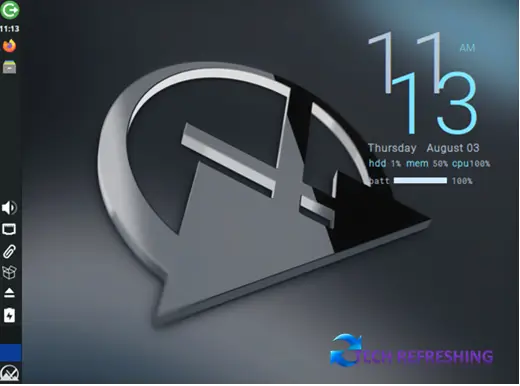MX Linux, the Debian-based distribution known for its commitment to delivering an elegant and efficient desktop experience, has unveiled its latest iteration – MX Linux 23, codenamed “Libretto.” This release marks a significant step forward since the previous major version, MX Linux 21, offering a slew of refinements and enhancements that promise to captivate both new users and loyal fans.
Foundation on Debian 12 ‘Bookworm’ and Cutting-Edge Kernel
At the core of MX Linux 23 lies the bedrock of Debian 12 ‘Bookworm,’ ensuring a stable and robust foundation for the distro’s features. One of the most notable updates is the integration of the long-term supported Linux Kernel 6.1 LTS, providing optimal performance and reliability.
For users with newer hardware, MX Linux 23’s AHS (Advanced Hardware Support) edition is powered by Linux Kernel 6.4, guaranteeing compatibility and performance improvements tailored to the latest devices.
Enhanced Installer Experience
The installer in MX Linux 23 has undergone a series of improvements to streamline the installation process. Noteworthy among these enhancements is the addition of support for ‘swapfiles,’ simplifying the setup of swap partitions. The ‘regular’ installation mode now defaults to swapfiles, contributing to a more seamless and user-friendly installation journey.
Moreover, the installer boasts an array of GUI tweaks, a debconf value that simplifies legacy grub-pc updates, and fixes addressing the grub bootloader installation process.
Desktop Environment Evolution
MX Linux 23 offers three distinct desktop environment flavors: XFCE, KDE Plasma, and Fluxbox. Each has received a fresh update to enhance the user experience:
XFCE 4.18: This version introduces improvements to the file manager, desktop/panel configurations, and an array of new wallpapers. For download go to Xfce click here.
KDE Plasma 5.27: MX Linux 23’s KDE Plasma flavor showcases a new welcome app, enhancements to the Discover software management tool, improved Flatpak permissions, enhanced multi-monitor support, and more.
Fluxbox 1.3.7: The Fluxbox variant comes with an array of new configuration options and a specialized ‘appfinder’ configuration for rofi, seamlessly replacing ‘xfce4-appfinder.’
A Suite of Updated Software
MX Linux 23’s software suite has undergone a comprehensive update, including the following notable components:
- Nala: Serving as the backend for MX-Updater.
- PipeWire/WirePlumber: Handling audio and video throughout the system.
- User Installed Packages: A new application enabling users to generate a file containing a list of their installed packages. This file proves invaluable for replicating software installations on different systems.
- Default UFW Firewall: The UFW firewall is now enabled by default, enhancing system security.
- Orca Screen Reader: Included across all editions to promote accessibility.
- MX App Updates: Various MX apps have been refined with bug fixes and enhancements.
Additional Enhancements
MX Linux 23 introduces further refinements, including a ‘check media’ function in the live boot menus. Notably, the distro sports a brand-new logo, the brainchild of forum user and team member Freja. This logo creatively draws inspiration from traditional MEPIS elements, breathing new life into the MX project’s visual identity.
MX Linux 23 “Libretto” stands as a testament to the distro’s dedication to providing a well-crafted and modern Linux experience. With its updated software stack, improved installer, and refreshed desktop environments, MX Linux continues to shine as a leading choice for those seeking a user-friendly yet powerful operating system.
You have the option to obtain the ISO you prefer either through the official website or by selecting the button provided below.


